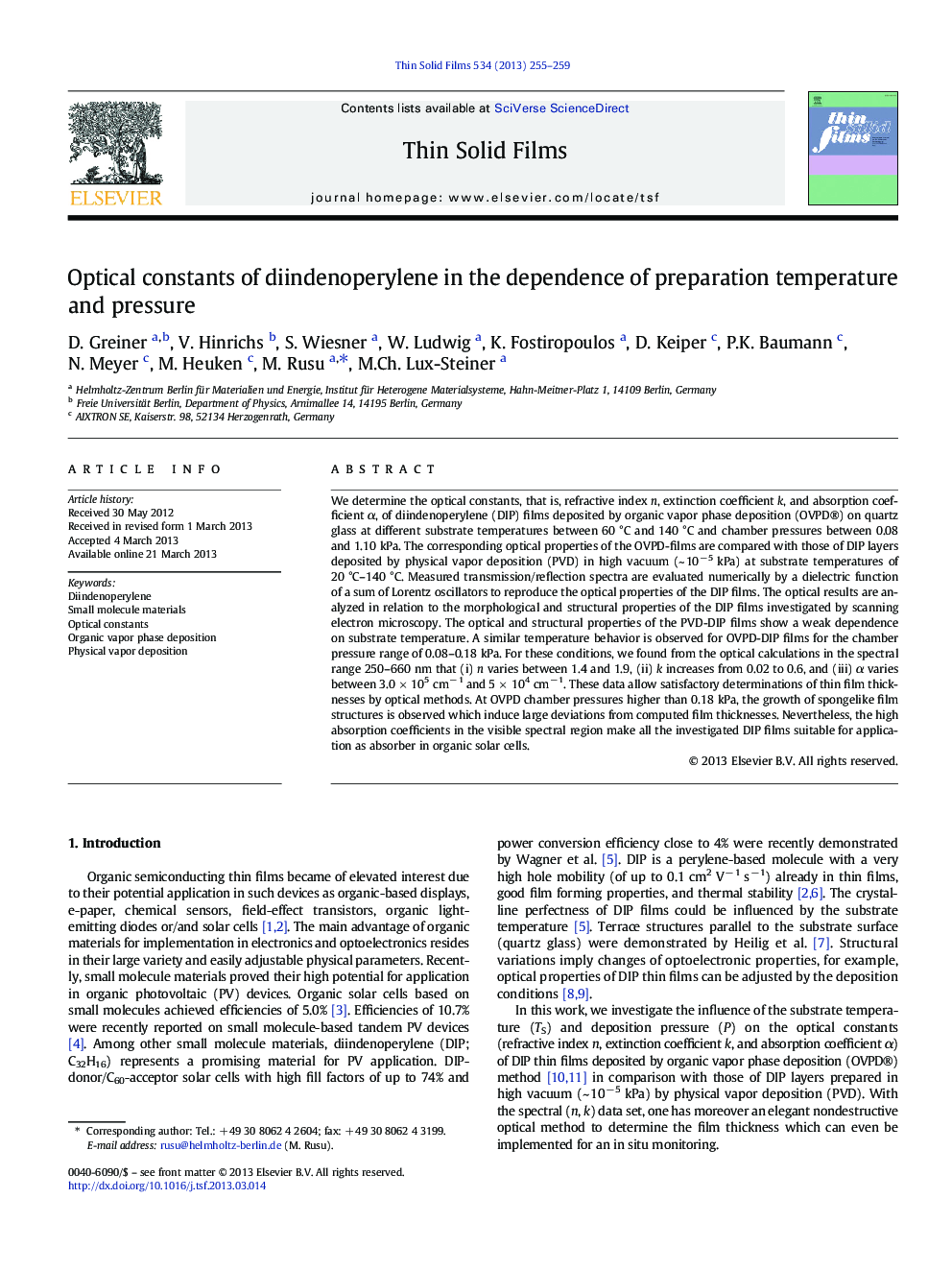| Article ID | Journal | Published Year | Pages | File Type |
|---|---|---|---|---|
| 1666278 | Thin Solid Films | 2013 | 5 Pages |
•Diindenoperylene (DIP) thin films by organic vapor phase deposition method.•Optical constants of DIP films determined as a function of temperature and pressure.•A sum of Lorentz oscillators as dielectric function applied for DIP layers.•DIP optical constants successfully used for the film thickness determination.
We determine the optical constants, that is, refractive index n, extinction coefficient k, and absorption coefficient α, of diindenoperylene (DIP) films deposited by organic vapor phase deposition (OVPD®) on quartz glass at different substrate temperatures between 60 °C and 140 °C and chamber pressures between 0.08 and 1.10 kPa. The corresponding optical properties of the OVPD-films are compared with those of DIP layers deposited by physical vapor deposition (PVD) in high vacuum (~ 10− 5 kPa) at substrate temperatures of 20 °C–140 °C. Measured transmission/reflection spectra are evaluated numerically by a dielectric function of a sum of Lorentz oscillators to reproduce the optical properties of the DIP films. The optical results are analyzed in relation to the morphological and structural properties of the DIP films investigated by scanning electron microscopy. The optical and structural properties of the PVD-DIP films show a weak dependence on substrate temperature. A similar temperature behavior is observed for OVPD-DIP films for the chamber pressure range of 0.08–0.18 kPa. For these conditions, we found from the optical calculations in the spectral range 250–660 nm that (i) n varies between 1.4 and 1.9, (ii) k increases from 0.02 to 0.6, and (iii) α varies between 3.0 × 105 cm− 1 and 5 × 104 cm− 1. These data allow satisfactory determinations of thin film thicknesses by optical methods. At OVPD chamber pressures higher than 0.18 kPa, the growth of spongelike film structures is observed which induce large deviations from computed film thicknesses. Nevertheless, the high absorption coefficients in the visible spectral region make all the investigated DIP films suitable for application as absorber in organic solar cells.
